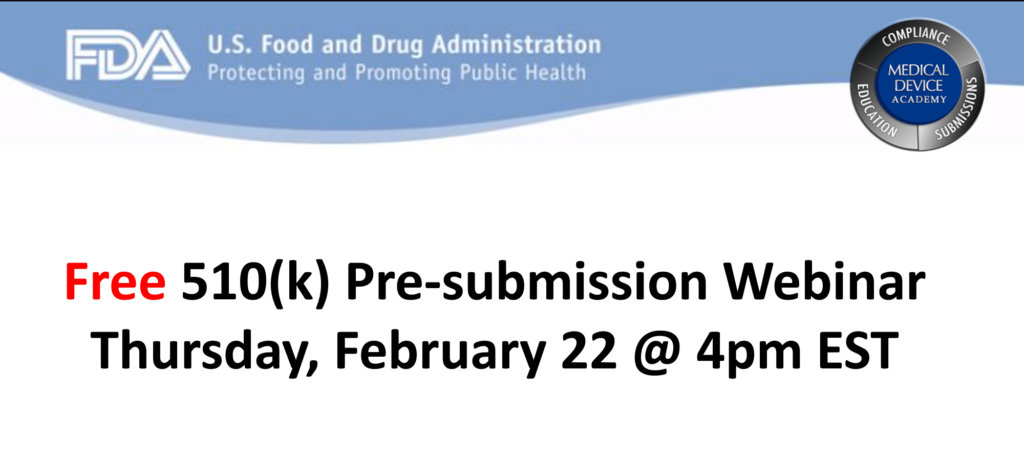This article is a copy of my responses to someone that submitted biocompatibility testing questions in preparation for a 510k pre-submission webinar.

Can you please answer the following questions related to biocompatibility for a 510k pre-submission meeting request?
This was the request by a person that registered for a 510k pre-submission webinar that was recorded in February 2018. The person asked some great questions that are very similar to other clients I work with. They also requested the biocompatibility testing questions in a way that did not divulge any confidential information–other than to indicate they live in Germany. Therefore, I am sharing my email response with you. Please register for this webinar and submit your questions. Questions are entered in an open text box, and you have room to ask multiple questions.
Biocompatibility testing question #1: Does the FDA now already ask for the AET (Analytical evaluation threshold) for chemical analyses?
This is exactly the type of biocompatibility testing questions you should be asking in a 510k pre-submission meeting. If you ask, “What biocompatibility testing is required for a 510k?” You will only receive a reference to the FDA guidance for biocompatibility. A better approach is to ask a biocompatibility testing lab to provide a Biological Evaluation Plan (BEP). Then you can submit your plan as part of the 510k pre-submission meeting request and include this question regarding the section of the BEP where you explain how you intend to perform chemical characterization of your device and how you intend to determine whether the materials represent risks related to sub-acute toxicity and sub-chronic toxicity endpoints.
Biocompatibility testing question #2: How can I avoid time-consuming genotoxicity studies for FDA?
Typically if you perform the “Big 3” (i.e., cytotoxicity, irritation, and sensitization), and then you perform chemical characterization, you are often able to prepare a Biological Evaluation Report to explain why there are no identified compounds in the chemical characterization that would warrant performing the genotoxicity studies. This is also often true for acute toxicity testing and sub-chronic toxicity testing. This often saves > $10K. To verify the FDA will accept this approach, you will typically provide a biological evaluation plan (BEP) as part of your pre-submission request. Your biocompatibility testing questions should specifically reference your BEP.
Question #3: And how can I face FDA with a cytotoxic wound dressing but which passed irritation, sensitization, genotox, and pyrogenicity tests?
I had a product that contained aluminum. Aluminum is cytotoxic to the cell line that is used in the cytotoxicity testing. However, aluminum does not have a high level of toxicity for the route of administration for that product. You should identify the reason why your product is cytotoxic and then explain why the device is no toxic for the intended use and duration of contact. This would normally be part of that BEP mentioned above.
Biocompatibility testing question #4: Which genotoxicity tests are state of the art for the FDA?
There are three ways to determine that. One is to look in the recognized standards database on the FDA website. The second is to review the FDA guidance on biocompatibility and application of ISO 10993-1. Finally, you can ask the FDA about the suitability of another test you want to perform during a pre-sub. If they prefer a different test, they will say so in an email response, and they are available for discussion by conference call during the pre-sub meeting to clarify their response.
I did not answer this question outright, because biocompatibility requirements change over time. This is also true for other verification testing standards. In fact, for one 510k project, I had seven different standards change just before submission. During a pre-submission meeting, the FDA should make you aware of coming changes to these tests. Also, better biocompatibility testing labs are aware of the changes before they are implemented. This is because the lab managers participate in the committees that revise and update international standards.
Will the meeting be recorded since I live in Germany?
Yes, all of my webinars are recorded. You will receive an email with a link for downloading the recording within 24 hours of completing the original live webinar or at the time of purchase if you are purchasing one of our previously recorded webinars. You can also schedule calls with me as a follow-up using the following link: http://calendly.com/13485cert/30min.


Pingback: ISO 10993-1-2018 Biocompatibility - Medical Device Academy What's New Medical Device Academy